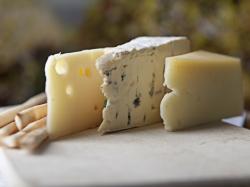Artisan Cheese Trends
October 30, 2014 | 2 min to read

From the gooey goodness of homemade mac and cheese, to freshly cut wedges of farmstead feta, Americans are reaching for artisan cheese at a briskly increasing pace. According to Packaged Facts’ study of Natural & Specialty Cheeses, conducted in March 2014, sales in the natural and specialty cheese market will reach $19 billion in 2018. Jeffrey Roberts, author of The Atlas of American Artisan Cheese, reported 825 licensed producers of artisan cheeses in the U.S. in 2012, up from 410 in 2006.
The word “artisan” has special cachet for menus these days. “A review of our MenuMonitor shows that in the past two years, there has been a 33% increase in the use of the words ‘artisan’ and ‘artisanal’ to describe menu items,” says Mary Chapman, senior director of product innovation at Technomic, Inc. “While that term is most often used to describe bread, it’s also increasingly used to describe cheese at higher-end restaurants, in such items as cheese plates.” In fact, the once-rare cheese plate is up 44 percent on menus since 2010.
“For many connected to the cheese industry, the word ‘artisan’ is often used, but rarely well defined. It’s really about two factors: first, using traditional, often hand-crafted, production methods, and second, being made in small batches,” says Christine Keller, director, trend practice, CCD Innovation. Keller notes that the already robust market for artisan cheese is continuing to grow in more mainstream venues. “You can find artisan cheese not just at Whole Foods, but at Safeway,” she says. “Consumers are grabbing more tightly onto the category.”
To read the rest of the story, please go to: InPerspective by Cargill Salt
